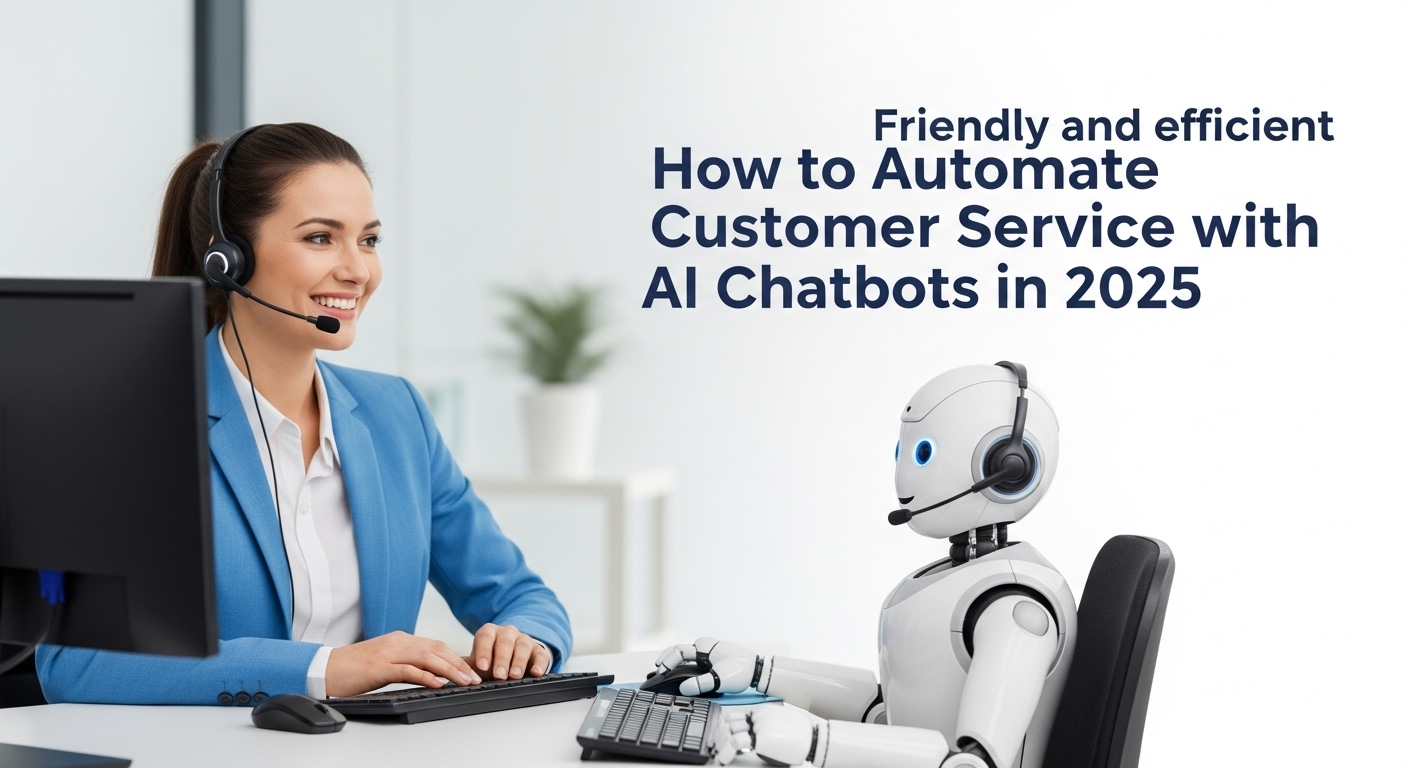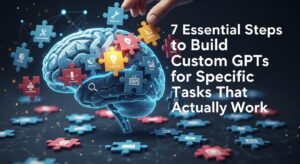The digital revolution has fundamentally transformed how businesses interact with their customers. Today, companies that fail to automate customer service with AI chatbots risk falling behind competitors who deliver instant, 24/7 support experiences.
Modern consumers expect immediate responses to their queries. Research shows that 82% of customers expect an immediate response to sales or marketing questions, while 90% rate an “immediate” response as important when they have customer service questions.
This comprehensive guide will walk you through everything you need to know about implementing AI chatbot customer service automation, from initial planning to advanced optimization strategies.
What Are AI Customer Service Chatbots?
AI customer service chatbots are sophisticated software programs powered by artificial intelligence and machine learning algorithms. These digital assistants can understand natural language, interpret customer intent, and provide relevant responses without human intervention.
Unlike traditional rule-based chatbots that follow predetermined scripts, modern AI chatbots learn from interactions and continuously improve their responses. They can handle complex queries, escalate issues when necessary, and integrate seamlessly with existing customer relationship management (CRM) systems.
Key Components of AI Chatbots
Modern customer service automation relies on several core technologies:
- Natural Language Processing (NLP): Enables chatbots to understand and interpret human language in context.
- Machine Learning: Allows continuous improvement through pattern recognition and data analysis.
- Intent Recognition: Identifies what customers want to achieve through their messages.
- Entity Extraction: Pulls specific information like names, dates, and product details from conversations.
- Integration Capabilities: Connects with existing business systems for seamless data flow.
The Revolutionary Benefits of AI Chatbot Customer Service
- Dramatic Cost Reduction: Implementing AI customer support chatbots can reduce operational costs by up to 30%. According to IBM’s research, businesses can save significant amounts by automating routine inquiries that typically consume 80% of support agent time.
- 24/7 Availability: Automated customer service solutions never sleep. Your AI chatbots provide consistent support across all time zones, ensuring customers receive help whenever they need it.
- Instant Response Times: While human agents might take several minutes to respond, AI chatbots deliver answers in milliseconds. This immediate gratification significantly improves customer satisfaction scores.
- Scalability Without Limits: During peak seasons or unexpected surges in support requests, AI chatbot customer service scales instantly without additional hiring or training costs.
- Data-Driven Insights: Every interaction generates valuable data about customer preferences, common issues, and service patterns. This intelligence helps optimize both automated and human support strategies.
How to Automate Customer Service with AI Chatbots: Step-by-Step Implementation
Step 1: Assess Your Current Customer Service Landscape
Before implementing customer service automation, conduct a thorough analysis of your existing support operations.
Assessment Area | Key Questions | Success Metrics |
Volume Analysis | What are your peak support hours? | Tickets per hour/day |
Query Categories | Which questions repeat most frequently? | Top 10 query types |
Response Times | How quickly do agents respond? | Average response time |
Customer Satisfaction | What’s your current CSAT score? | CSAT, NPS scores |
Cost Analysis | What’s your cost per support ticket? | Dollar amount per resolution |
Step 2: Define Your Automation Goals
Establish clear objectives for your AI chatbot customer service implementation:
Primary Goals:
- Reduce response times by 90%
- Handle 70% of inquiries automatically
- Decrease support costs by 25%
- Improve customer satisfaction scores by 15%
Secondary Goals:
- Free up human agents for complex issues
- Gather better customer data
- Provide multilingual support
- Create consistent brand experiences
Step 3: Choose the Right AI Chatbot Platform
Selecting the appropriate platform is crucial for successful customer service automation. Consider these leading solutions:
Enterprise Solutions:
- Microsoft Bot Framework – Comprehensive development tools
- IBM Watson Assistant – Advanced AI capabilities
- Google Dialogflow – Natural language understanding
Mid-Market Options:
- Intercom – User-friendly with strong integrations
- Zendesk Chat – Seamless CRM integration
- Drift – Sales-focused conversational AI
Step 4: Design Your Conversation Flows
Create detailed conversation maps that guide how your AI customer support chatbots will interact with users.
Essential Flow Components:
- Welcome Message: Friendly greeting that sets expectations
- Intent Classification: Quick identification of customer needs
- Information Gathering: Collecting relevant details for resolution
- Solution Delivery: Providing accurate answers or next steps
- Escalation Triggers: Seamless handoff to human agents when needed
Step 5: Train Your AI Chatbot
Effective training is the foundation of successful automated customer service solutions.
Training Data Sources:
- Historical support tickets
- FAQ documents
- Product manuals
- Common customer scenarios
- Industry-specific terminology
Training Best Practices:
- Use diverse language patterns
- Include edge cases and exceptions
- Regular model updates and retraining
- A/B testing different responses
- Continuous performance monitoring
Advanced Strategies to Optimize AI Chatbot Customer Service
Personalization Through Data Integration
Connect your chatbots with customer databases to deliver personalized experiences. When customers initiate conversations, the AI should access their purchase history, preferences, and previous interactions.
Multilingual Support Capabilities
Expand your market reach by implementing multilingual customer service automation. Modern AI chatbots can detect languages automatically and respond appropriately.
Omnichannel Integration
Ensure your AI customer support chatbots work consistently across all channels:
- Website chat widgets
- Mobile applications
- Social media platforms
- Messaging apps (WhatsApp, Facebook Messenger)
- Voice assistants
Sentiment Analysis Integration
Advanced AI chatbots can detect customer emotions and adjust their responses accordingly. This capability helps identify frustrated customers who need immediate human attention.
Common Implementation Challenges and Solutions
- Customer Resistance to Automated Support: Gradually introduce AI chatbot customer service by handling simple queries first. Always provide easy escalation options to human agents.
- Complex Query Handling: Implement robust escalation protocols and continuous learning systems. Use customer service automation for routine tasks while reserving complex issues for human experts.
- Maintaining Brand Voice Consistency: Develop detailed style guides and regularly audit chatbot responses to ensure they align with your brand personality.
- Integration Difficulties: Work with experienced developers and choose platforms with strong API capabilities for seamless integration with existing systems.
Measuring Success: Key Performance Indicators
Track these essential metrics to evaluate your automated customer service solutions:
Metric | Target Range | Impact |
Bot Resolution Rate | 70-85% | Higher automation efficiency |
Average Response Time | Under 5 seconds | Improved customer experience |
Customer Satisfaction | 4.0+ (5-point scale) | Overall service quality |
Escalation Rate | 15-30% | Appropriate complexity handling |
Cost Per Interaction | 50-70% reduction | ROI demonstration |
Future Trends in AI Customer Service Automation
- Conversational AI Evolution: The next generation of AI customer support chatbots will feature more natural, human-like conversations powered by advanced language models.
- Predictive Support: AI will anticipate customer needs based on behavior patterns, proactively offering assistance before issues arise.
- Emotional Intelligence Integration: Future chatbots will better understand and respond to human emotions, creating more empathetic customer interactions.
- Voice-First Experiences: Voice-activated customer service automation will become mainstream as smart speakers and voice assistants gain adoption.
Best Practices for Long-Term Success
- Regular Performance Reviews: Schedule monthly assessments of your AI chatbot customer service performance. Analyze conversation logs, identify improvement opportunities, and update training data accordingly.
- Continuous Training Updates: Customer language evolves, and so should your chatbots. Regular retraining with fresh data keeps your automated customer service solutions relevant and effective.
- Human-AI Collaboration: The most successful implementations combine AI efficiency with human empathy. Train your support team to work alongside chatbots for optimal results.
- Privacy and Security Compliance: Ensure your customer service automation meets all data protection regulations, including GDPR, CCPA, and industry-specific requirements.
Implementation Checklist
Use this comprehensive checklist to ensure successful deployment:
Pre-Implementation:
- [ ] Complete current state assessment
- [ ] Define success metrics and goals
- [ ] Select appropriate chatbot platform
- [ ] Design conversation flows
- [ ] Prepare training data
During Implementation:
- [ ] Configure chatbot settings
- [ ] Upload and test training data
- [ ] Set up system integrations
- [ ] Create escalation protocols
- [ ] Conduct thorough testing
Post-Implementation:
- [ ] Monitor performance metrics
- [ ] Gather user feedback
- [ ] Optimize based on data insights
- [ ] Plan regular training updates
- [ ] Scale to additional channels
Conclusion
Learning how to automate customer service with AI chatbots represents a strategic investment in your company’s future. The technology offers unprecedented opportunities to reduce costs, improve customer satisfaction, and scale support operations efficiently.
Successful implementation requires careful planning, the right technology choices, and ongoing optimization. By following the strategies outlined in this guide, you’ll be well-positioned to transform your customer service operations and gain a competitive advantage in today’s digital marketplace.
The journey to effective AI chatbot customer service may seem complex, but the rewards – including cost savings, improved efficiency, and enhanced customer experiences – make it an essential initiative for forward-thinking businesses.
Remember that customer service automation is not about replacing human agents entirely, but rather empowering them to focus on high-value interactions while AI handles routine inquiries. This balanced approach creates the best possible experience for both customers and support teams.
Start your automation journey today, and join the thousands of companies already benefiting from AI-powered customer service solutions.











